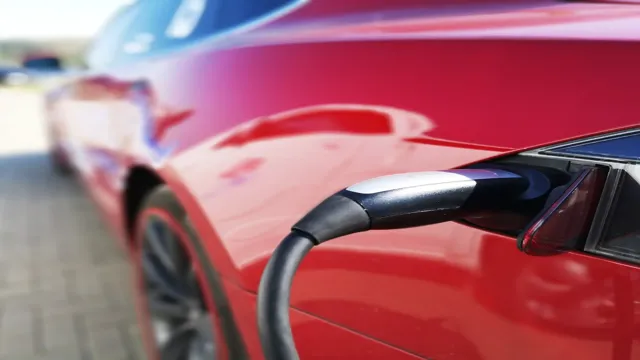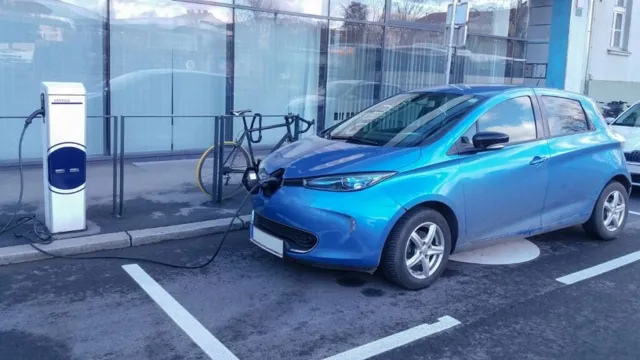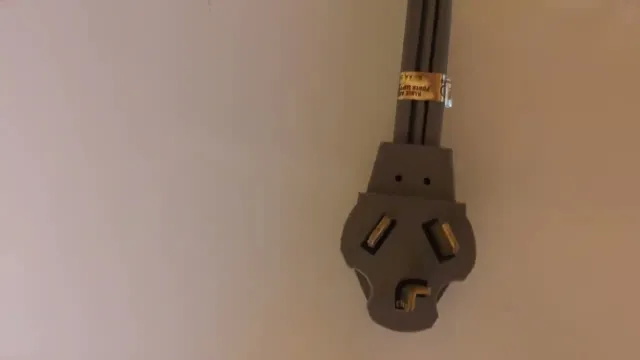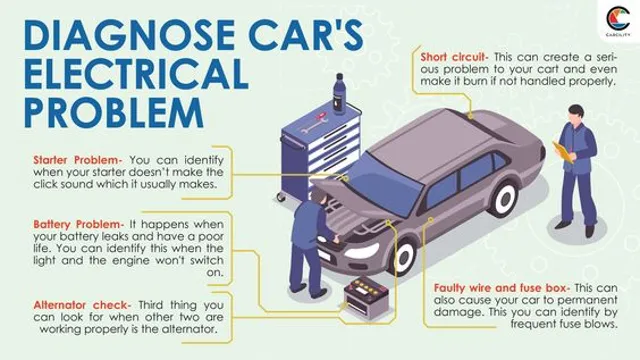Unplugging the Myths: Why You Can Safely Leave Your Tesla Plugged In Overnight
Tesla electric cars prove to be game-changers in terms of energy and sustainability. In addition to being environmentally-friendly vehicles, Tesla models boast impressive performance and safety features. However, one question lingers in the minds of Tesla owners- how to optimize their Tesla charging experience? Charging a Tesla can be an entirely different process than filling up a traditional gas-powered car, so it’s essential to have a clear understanding of the different charging options available and the necessary steps to take for a seamless charging experience.
In this blog post, we will explore some proven Tesla charging tips and tricks that will help you make the most out of your electric vehicle. From determining the best charging method for your lifestyle and driving habits to optimizing your battery’s health and lifespan, we’ve got you covered. So, if you’re a Tesla owner looking to up your charging game, keep reading!
Can You Leave Tesla Plugged In Overnight?
Yes, you can leave a Tesla plugged in overnight without causing any harm to the car or affecting its battery life negatively. In fact, it is recommended to keep your Tesla charging overnight to ensure that it has enough charge to last for the next day’s activities. Tesla’s sophisticated battery management system ensures that the battery charges efficiently and safely, preventing any overcharging or overheating issues.
Moreover, leaving your Tesla plugged in overnight gives it an opportunity to complete some essential tasks, such as software updates and battery conditioning, to maintain peak performance. However, it is essential to note that leaving your Tesla plugged in for an extended period, such as several weeks, can lead to some battery degradation. Nonetheless, this can be mitigated by setting your car’s maximum charge limit to 90%, preventing any unnecessary strain on the battery.
Overall, leaving your Tesla plugged in overnight is not only safe but also beneficial to your car’s battery and performance.
Teslas Can Be Left Plugged In
Yes, you can leave your Tesla plugged in overnight without any problems. Unlike traditional gasoline cars, Teslas only charge as much as they need and then stop; they won’t overcharge. The car’s onboard computer will stop the charging process when the battery is full, ensuring that no damage is done to the battery.
Furthermore, Teslas are designed to be left plugged in and charging when not in use as it ensures the battery remains topped up, which is essential for the longevity and performance of the battery. In fact, Tesla recommends that you leave your car plugged in whenever possible, as it helps the car maintain a good battery percentage. So don’t worry, leaving your Tesla plugged in overnight won’t cause any harm, and it’s even better for your car in the long run.

Charging To Full Battery Is Fine
As a Tesla owner, you might ponder whether you should leave your car plugged in overnight or not. The good news is that Tesla’s charging technology is safe and reliable, and charging your car to full battery is absolutely fine. In fact, Tesla recommends keeping your car plugged in whenever possible to keep the battery charged and to maintain the overall health of the battery.
In other words, charging your Tesla overnight is not only permissible, but it’s also highly recommended. The only thing to keep in mind is that the charge rate will slow down as the battery gets closer to 100%. Therefore, if you need a quick charge, it’s best to charge your car when the battery is low.
Other than that, you can rest assured that your Tesla will be just fine plugged in overnight.
The Benefits of Leaving Your Tesla Plugged In
If you’re wondering, “Can you leave a Tesla plugged in overnight?”, the answer is yes, and in fact, it’s highly recommended! There are many benefits to leaving your Tesla plugged in, including always having a fully charged battery when you need it. When plugged in, your Tesla will automatically charge to a preset limit and then maintain that level, so you never have to worry about running out of juice. Additionally, leaving your Tesla plugged in can help improve the lifespan of your battery.
The battery management system will automatically balance the cells and keep them at a healthy level of charge, which ultimately leads to a longer battery life. So, if you want to make sure your Tesla is always ready to go, leaving it plugged in overnight is a smart move.
Conveniently Charge Your Tesla Overnight
Charging your Tesla car overnight is not only convenient but also comes with significant benefits. It ensures that your vehicle is fully charged and ready to hit the road by morning. By plugging in the vehicle while at home, you don’t have to worry about running low on power during your daily routines.
Leaving your Tesla plugged in overnight is not harmful to the battery since the charging system is designed to stop supplying power once the battery is full. In fact, charging your Tesla regularly keeps the battery healthy, ensuring longevity and reducing the need for expensive repairs or replacements. Also, charging your Tesla overnight means you are less likely to experience charging queues at the superchargers during peak hours.
By keeping your vehicle regularly charged at home, you ensure little to no wait times when you choose to charge at public stations. Overall, leaving your Tesla plugged in overnight is a convenient way to keep your vehicle charged and ready for the daily commute while maximizing its battery life for extended use.
Prevent Battery Drain and Increase Longevity
Leaving your Tesla plugged in when you’re not using it can have some surprising benefits. Not only does it prevent battery drain, but it can actually increase the longevity of your car’s battery. When your Tesla is plugged in, it stays in a “ready state,” which means it’s constantly monitoring its charge level and making adjustments as needed.
This not only maintains the battery’s charge level, but it can also prevent the battery from being overcharged, which can cause damage and reduce its lifespan. Think of it like a plant – if you water it every day, it will grow strong and healthy. But if you only water it once a week, it may struggle to survive.
The same goes for your Tesla’s battery. So, next time you’re not using your car for an extended period of time, leave it plugged in and give your battery the chance to thrive.
Maximize Regenerative Braking Capabilities
Regenerative Braking If you’re a Tesla owner, you probably know that your vehicle comes with an incredible feature called regenerative braking. Regenerative braking helps you save energy by recovering some of the kinetic energy that’s normally lost during braking and converting it into electricity that can be stored in the battery. But did you know that you can maximize your regenerative braking capabilities by leaving your Tesla plugged in? When your car is charging, it’s already set up to receive and store any excess power generated during braking, so all you need to do is keep it plugged in and let it do its thing.
Not only will this help you squeeze every last bit of efficiency out of your vehicle, but it’ll also help prolong the life of your battery. So next time you park your Tesla, consider leaving it plugged in and watch as your energy savings begin to add up.
Charging Safety Tips For Tesla Owners
Many Tesla owners wonder if leaving their vehicle plugged in overnight is safe. The simple answer is yes, it is completely safe to do so. Tesla vehicles come equipped with smart technology that regulates charging and ensures the battery is not overcharged or overheated.
However, there are a few charging safety tips to keep in mind. It is best to plug in your Tesla when it has around 20-30% battery life remaining and unplug it once it reaches 80-90%. This will help prolong the life of your battery and prevent any potential damage.
Additionally, never charge your Tesla using an extension cord or a damaged plug. Always use the charging cable provided by Tesla and ensure that it is in good condition. By following these simple charging safety tips, you can enjoy the convenience of leaving your Tesla plugged in overnight without any worries.
Use the Correct Charging Equipment
As a Tesla owner, it’s crucial to use the correct charging equipment to ensure safety and avoid possible damage to your vehicle. When using a charging station or wall connector, make sure it’s compatible with your Tesla’s charging capabilities. It’s always best to use Tesla’s official charging equipment as they are designed specifically for your vehicle.
Using non-Tesla equipment can potentially damage your car’s battery and cause safety issues. Additionally, never use a damaged or frayed charging cable and always check for any signs of wear and tear before using it. Remember, investing in your Tesla’s charging equipment is a worthy investment for ensuring your vehicle’s safety and longevity.
Avoid Overcharging Your Tesla Battery
As a proud owner of a Tesla, it’s essential to take care of your battery by avoiding overcharging. Overcharging can damage your battery and reduce its overall lifespan. One way to ensure that you don’t overcharge your Tesla is by setting charging limits through the Tesla app.
By doing so, you can choose the maximum charging level and set charging times that align with your schedule. Additionally, it’s crucial to avoid charging your Tesla to 100% regularly, as this can also damage the battery. Experts recommend charging your Tesla to about 80% and occasionally charging it to 100% for long trips.
With these charging safety tips, you can prolong the life of your Tesla battery and enjoy the full benefits of being a Tesla owner.
Final Thoughts: Leave Your Tesla Plugged In Overnight
Yes, you can leave your Tesla plugged in overnight. In fact, it is recommended to keep your Tesla plugged in when not in use to ensure the battery remains charged and ready for use. Tesla vehicles come equipped with smart charging technology that will automatically stop charging the battery once it reaches its maximum capacity, so there is no need to worry about overcharging.
Additionally, keeping your Tesla plugged in overnight will allow it to take advantage of off-peak electricity rates, resulting in lower charging costs. So, if you want to ensure your Tesla is always ready to hit the road when you are, leave it plugged in overnight and enjoy the peace of mind that comes with knowing your battery is fully charged.
Conclusion
In conclusion, leaving your Tesla plugged in overnight is perfectly fine and won’t harm your car’s battery. Think of it like leaving your phone plugged in overnight – you wouldn’t unplug it halfway through the night, right? And with Tesla’s advanced battery management system, you can have peace of mind knowing that your car is smart enough to maintain its health and longevity, no matter how long it’s plugged in. So go ahead, plug in and dream sweet electric dreams.
“
FAQs
Is it safe to leave my Tesla plugged in overnight?
Yes, it is safe to leave your Tesla plugged in overnight. The car is designed to automatically stop charging once the battery is full, so overcharging is not an issue.
Can I leave my Tesla charging for more than one day?
Yes, you can leave your Tesla plugged in and charging for more than one day without any issues. The car’s onboard computer will manage the charging to ensure the battery remains healthy.
Is it harmful to charge my Tesla to 100%?
Charging your Tesla to 100% occasionally is not harmful, but doing it regularly can reduce the battery’s lifespan. It is recommended to keep your battery’s charge level between 20% and 80% for the best battery health.
What happens if I forget to unplug my Tesla after it’s fully charged?
If you forget to unplug your Tesla after it’s fully charged, the car’s onboard computer will stop the charging process to prevent overcharging. Leaving your Tesla plugged in for an extended period will not cause any harm to the battery.





